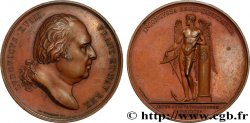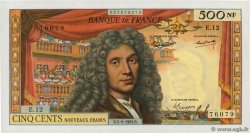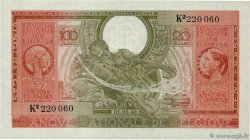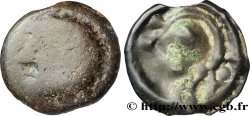100.00 €(Approx. 114.00$ | 86.00£)
Quantity
Add to your cart

Type : Médaille, Monument au duc de Berry
Date: 1824
Metal : copper
Diameter : 50,5 mm
Orientation dies : 12 h.
Engraver ANDRIEU Jean-Bertrand (1761-1822) / MICHAUT Auguste-François (1786-1879)
Weight : 65,13 g.
Edge : lisse
Puncheon : sans poinçon
Coments on the condition:
Jolie patine marron hétérogène, présentant quelques traces de manipulation. Aspect légèrement irisé. Traces de manipulation
Obverse
Obverse legend : LVDOVICVS . XVIII - FRAN . ET . NAV . REX ..
Obverse description : Buste de Louis XVIII à droite, un cordon dans les cheveux, signé sur le tranché du bras : ANDRIEU F. et DE PUYMAURIN DIREXIT.
Reverse
Reverse legend : BITURIGUM DUCI - NEFARIE INTEREMTO // MONUMENTUM EN MARMORE / VERSALIENSES ANNO / 1824.
Reverse description : Le duc de Berry demi-nu, portant la main gauche sur la poitrine, expire dans les bras de la Religion. Signé : MICHAUT.
Commentary
Médaille du monument élevé à Versailles à la mémoire du duc de Berry, indignement assassiné.
Jean-Bertrand Andrieu, né à Bordeaux le 4 novembre 1761 et mort à Paris le 6 décembre 1822, est un sculpteur et graveur médailleur français.
Auguste-François Michaut, né à Paris le 29 septembre 1786 et mort à Versailles le 26 décembre 1879 est un graveur des monnaies de France et des Pays-Bas, un médailleur et un sculpteur français.
Le duc de Berry, Charles Ferdinand d'Artois, fut mortellement blessé à la sortie de l'Opéra de la rue de Richelieu le 13 février 1820 par l'ouvrier Louvel qui voulait éteindre en lui la lignée des Bourbons. C'était le second fils du frère du roi Louis XVIII, le futur Charles X.
Le duc de Berry mourut le lendemain, à six heures du matin, des suites de ses blessures. Les autorités décidèrent de faire élever à Paris un monument à sa mémoire. Une souscription nationale fut ouverte. Cependant les villes d'Auxerre (en l'abbatiale Saint-Germain) et de Versailles firent ériger leur propre sculpture.
La ville de Versailles fit appel à James Pradier (1790-1852), auréolé du grand prix de Rome en 1813 et qui revenait d'Italie.
Pradier conçut un monument entier, dit en «ronde-bosse», d'une manière toute néoclassique. La Religion, vêtue d'une drapé à l'antique, soutient le mourant.
La Monarchie de Juillet fit retirer le monument. En 1852, il retrouva sa place à la demande de la municipalité
.
Jean-Bertrand Andrieu, né à Bordeaux le 4 novembre 1761 et mort à Paris le 6 décembre 1822, est un sculpteur et graveur médailleur français.
Auguste-François Michaut, né à Paris le 29 septembre 1786 et mort à Versailles le 26 décembre 1879 est un graveur des monnaies de France et des Pays-Bas, un médailleur et un sculpteur français.
Le duc de Berry, Charles Ferdinand d'Artois, fut mortellement blessé à la sortie de l'Opéra de la rue de Richelieu le 13 février 1820 par l'ouvrier Louvel qui voulait éteindre en lui la lignée des Bourbons. C'était le second fils du frère du roi Louis XVIII, le futur Charles X.
Le duc de Berry mourut le lendemain, à six heures du matin, des suites de ses blessures. Les autorités décidèrent de faire élever à Paris un monument à sa mémoire. Une souscription nationale fut ouverte. Cependant les villes d'Auxerre (en l'abbatiale Saint-Germain) et de Versailles firent ériger leur propre sculpture.
La ville de Versailles fit appel à James Pradier (1790-1852), auréolé du grand prix de Rome en 1813 et qui revenait d'Italie.
Pradier conçut un monument entier, dit en «ronde-bosse», d'une manière toute néoclassique. La Religion, vêtue d'une drapé à l'antique, soutient le mourant.
La Monarchie de Juillet fit retirer le monument. En 1852, il retrouva sa place à la demande de la municipalité
.








 Report a mistake
Report a mistake Print the page
Print the page Share my selection
Share my selection Ask a question
Ask a question Consign / sell
Consign / sell
 Full data
Full data















